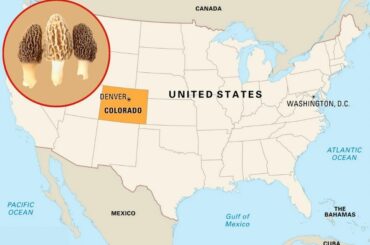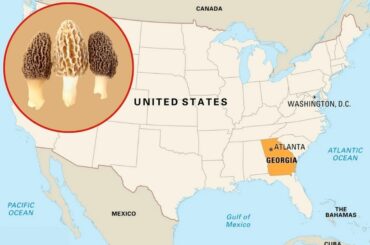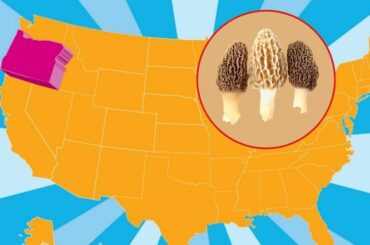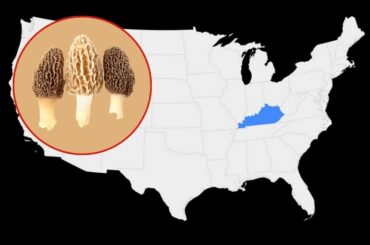Have you ever dreamed of wandering through the lush forests of Kansas in search of the elusive and delectable morel mushrooms? If you’re a mushroom enthusiast or an adventurous forager, the quest to find these prized fungi can be an exciting and rewarding endeavor.
In this article, we will explore the enchanting world of morel mushrooms and uncover the best locations in Kansas to embark on your morel-hunting expedition. So, grab your basket and let’s dive into the mysterious realm of morels!
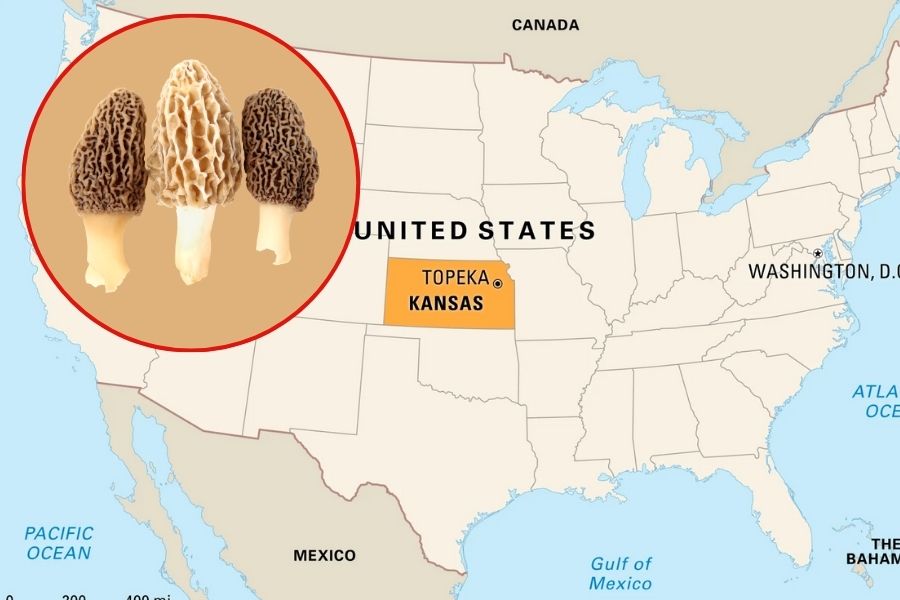
Where to Find Morel Mushrooms in Kansas ?
You can find morel mushrooms in Eastern Woodlands and River Valleys, State Parks and Wildlife Areas, Burned Areas and Disturbed Ground, and Community Gardens and Orchards. Let me get in to that in a minutes. Before that let me explain a bit about morel mushroom.
Understanding Morel Mushrooms
Contents
Before we delve into the specifics of Kansas, let’s take a moment to understand the fascinating nature of morel mushrooms. Morels, scientifically known as Morchella spp., are highly coveted edible fungi celebrated for their unique appearance and exceptional taste. With their distinctive honeycomb-like caps and varying shades of tan, brown, or black, morels are a sight to behold in the wild.
Habitat Preferences of Morel Mushrooms
To increase your chances of finding morel mushrooms, it’s crucial to understand their preferred habitats. Morels are typically found in wooded areas, particularly in association with specific tree species. They have a strong affinity for certain trees such as elm, ash, poplar, and apple. Morels also thrive in areas that have been subject to wildfires or controlled burns, as these events contribute to the favorable soil conditions necessary for their growth.
Exploring Morel Mushroom Locations in Kansas
Now, let’s focus on Kansas and discover some of the prime locations where morel mushrooms can be found:
1. Eastern Woodlands and River Valleys
The eastern part of Kansas, including regions along the Missouri River and its tributaries, offers promising opportunities for morel mushroom hunting. The wooded areas and river valleys in this region provide the ideal habitat for morels. Look for forests with a mix of hardwood trees, particularly those mentioned earlier, as they create the perfect environment for morel growth.
2. State Parks and Wildlife Areas
Kansas is home to several state parks and wildlife areas that can serve as fruitful hunting grounds for morel enthusiasts. Parks such as Clinton State Park, Perry State Park, and Cross Timbers State Park have diverse ecosystems and ample wooded areas where morels might flourish. Explore the trails and forests within these parks, keeping an eye out for the telltale signs of morels peeking through the leaf litter.
3. Burned Areas and Disturbed Ground
As mentioned earlier, morels have a predilection for areas that have experienced wildfires or controlled burns. These events create a unique environment that stimulates morel growth. After such incidents, the burnt areas and disturbed ground become potential hotspots for morels. Keep an eye out for these areas, particularly in regions where controlled burns are conducted as part of land management practices.
4. Community Gardens and Orchards
Don’t underestimate the potential of community gardens and orchards when it comes to finding morels. These cultivated spaces often harbor the right combination of trees, soil conditions, and organic matter, creating an inviting habitat for morels to thrive. Seek permission from the garden or orchard owners and explore these locations, paying attention to the base of trees and around woody debris.

Tips for Morel Mushroom Hunting in Kansas
Now that we’ve identified some potential locations, let’s dive into some tips that can enhance your morel mushroom hunting experience in Kansas:
1. Timing is Key
Morels typically make their appearance in the spring, usually between late March and early May, depending on weather conditions. Keep an eye on the soil temperature and moisture levels, as these factors play a crucial role in the growth and emergence of morels.
2. Patience and Persistence
When it comes to morel mushroom hunting, patience and persistence are key. Morels can be elusive and sporadic in their growth patterns, so it’s essential to keep searching and exploring different areas. Don’t be discouraged if you don’t find any right away. Sometimes, it takes time to stumble upon the perfect spot where morels abound.
3. Look for Distinctive Features
Develop a keen eye for the distinctive features of morels. Their unique honeycomb-like caps and hollow stems are unmistakable. Train yourself to spot these characteristics among the leaf litter and forest floor. As you gain experience, you’ll become better at recognizing the telltale signs of morels from a distance.
4. Stay Observant
Observation is key during your morel mushroom hunting adventure. Pay attention to the surrounding environment, including the types of trees, moisture levels, and soil conditions. Take note of any changes in terrain or habitat that may indicate a higher likelihood of finding morels.
5. Respect Nature and Obtain Permissions
When exploring different locations for morels, it’s essential to respect the environment and any private property rights. Seek permission from landowners before entering private lands, such as orchards or community gardens. Follow ethical foraging practices, leaving no trace behind, and avoiding any damage to the natural habitat.
6. Document and Learn
Keep a record of your morel hunting experiences. Take photos, jot down notes about the locations, soil conditions, and any other relevant details. This documentation will not only help you track your progress but also serve as a valuable resource for learning and improving your future foraging endeavors.
Conclusion
Kansas, with its diverse landscapes and wooded areas, offers exciting opportunities for morel mushroom enthusiasts. By understanding the habitat preferences of morels and exploring locations such as eastern woodlands, state parks, burned areas, and community gardens, you can increase your chances of finding these prized fungi. Remember to practice patience, observe the distinctive features of morels, and respect the environment while venturing on your mushroom hunting expeditions.
Embrace the adventure and immerse yourself in the beauty of Kansas’ natural spaces. Who knows, you may soon discover the thrill of stumbling upon a patch of morel mushrooms, adding a touch of gastronomic delight to your foraging journey. Happy hunting, and may your explorations in Kansas be filled with wonder and bountiful discoveries!

